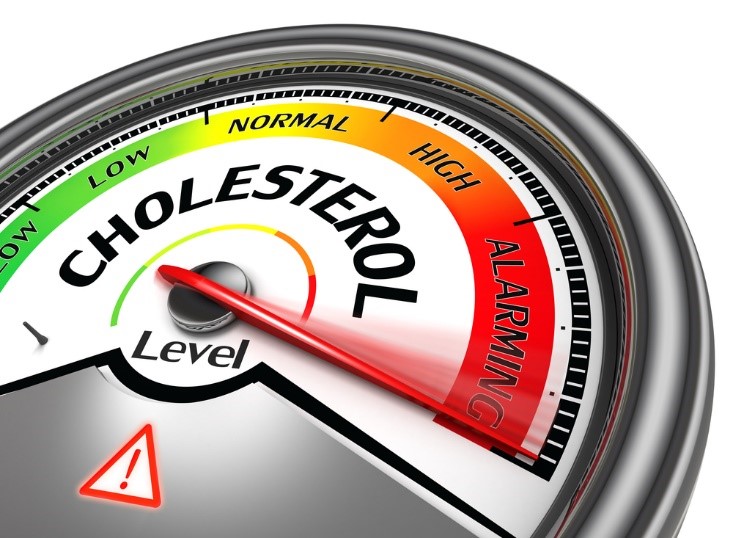What are the Symptoms of High Triglycerides?

Triglyceride levels in the blood can tell much about a person’s cardiovascular health. High triglycerides are one of the causes of high blood pressure and come with a risk of stroke and heart attack. But unlike cholesterol-related cases, high triglycerides have almost non-existent symptoms. As a result, it is rather difficult to diagnose this condition.
What are triglycerides?
Triglycerides are fats or lipids that the body uses to store excess energy from the food consumed. When people consume more calories than they need, the body converts the extra calories into triglycerides and keeps them for future use.
While triglycerides are essential for energy storage, their high content in the bloodstream is harmful. High triglyceride levels can indicate various underlying health issues, especially heart problems and high blood pressure.
What are the causes of high triglycerides?
Here are some common high triglycerides causes:
1. Metabolic Syndrome
The most common cause of high triglycerides is metabolic syndrome. It is a condition where a patient’s body has pre-existing health conditions like obesity and high blood pressure, blood sugar, and cholesterol levels.
2. Drug Reaction
Drug side effects can also lead to high triglycerides. It is a particularly common condition for HIV and cancer medications. Apart from them, reactions from diuretics, steroids, and retinoids can also shoot up triglycerides.
3. Unhealthy Food Habits
Food rich in carbohydrates, saturated fats, and trans fats like meat, white flour, and ultra-processed items can cause excess calories, resulting in high triglyceride levels. Alcohol also adds to triglycerides due to its high calorie and sugar content.
4. Sedentary Lifestyle
Lack of exercise means the body does not use excess calories stored as triglycerides in the blood. Since the body cannot use its stored energy, it leads to high triglycerides.
What is a high triglyceride level?
Triglyceride creation is a normal function that the human body regularly performs. So, the mere existence of triglyceride in blood is not a health concern. However, the triglyceride levels beyond a certain limit are unhealthy.
Here’s the breakdown of levels of triglyceride in the bloodstream below:
- Normal: Below 150 mg/dl (1.7 mmol/L)
- Moderate: Between 150 to 199 mg/dl (1.8 to 2.2 mmol/L)
- High: Between 200 to 499 mg/dl (2.3 to 5.6 mmol/L)
- Very High: 500 mg/dL or above (5.7 mmol/L or above)
Levels above 200 mg/dl are considered high triglycerides and require immediate medical attention.
What are the symptoms of high triglycerides?
People with high triglycerides rarely show any noticeable symptoms. As a result, it is difficult to diagnose the condition without going through regular blood tests. However, extreme cases of this condition can show some symptoms. Some high triglycerides symptoms are as follows:
1. High Blood Pressure
High blood pressure , a symptom of high triglycerides is very common. That’s because this condition often exists along with high blood pressure disease called hypertension.
2. Pancreatitis
High triglycerides can cause acute pancreatitis, which is inflammation of the pancreas. It can cause vomiting, nausea, and abdominal pain.
3. Skin Issues
Patients with high triglycerides can develop severe skin problems, primarily reddening of the skin. Also, extreme cases can cause damage to the skin on the chest, back, arms, and legs.
4. Lipemia Retinalis
When triglyceride level in the blood exceeds 1000 mg/dl, it causes lipemia retinalis. It is a condition when high lipid content in the blood causes creamy-white discolouration of retinal vessels.
5. Enlarged Liver and Spleen
High triglyceride in the blood can enlarge the liver and spleen. It can cause severe pain in the upper abdomen.
6. Multifactorial Chylomicronaemia Syndrome
At 1,500 mg/dl or more of triglyceride levels, patients can suffer multifactorial chylomicronaemia syndrome, a condition in which the body stops breaking down fats.
7. Memory Loss
Patients who have high triglycerides along with high levels of low-density lipoprotein (bad cholesterol) can develop short-term memory loss. This memory loss can also lead to issues like dementia in old age.
How to diagnose high triglycerides?
High triglyceride is a condition which rarely shows any symptoms. So, it is difficult to diagnose this condition solely based on symptoms. As a result, blood tests are essential to diagnose cases of high triglycerides.
Doctors suggest that people should regularly undergo the Lipid Panel Test or Triglycerides Serum Test. The lipid panel test checks the blood for cholesterol and triglyceride content, while the triglycerides serum test only reveals high triglycerides.
FAQs
1. When should I repeat my triglycerides test?
Doctors suggest that healthy adults repeat triglyceride tests every four to six years. As for children, the first test can be conducted at the age of nine to eleven years and repeated in their late teens.
2. What are the warning signs of high triglycerides?
High blood pressure, pancreatitis, skin issues, enlarged liver and spleen, and memory loss are some common warning signs of high triglycerides.
3. What is a high triglyceride level?
Triglyceride levels above 200 mg/dl (2.3 mmol/L) are considered high.













